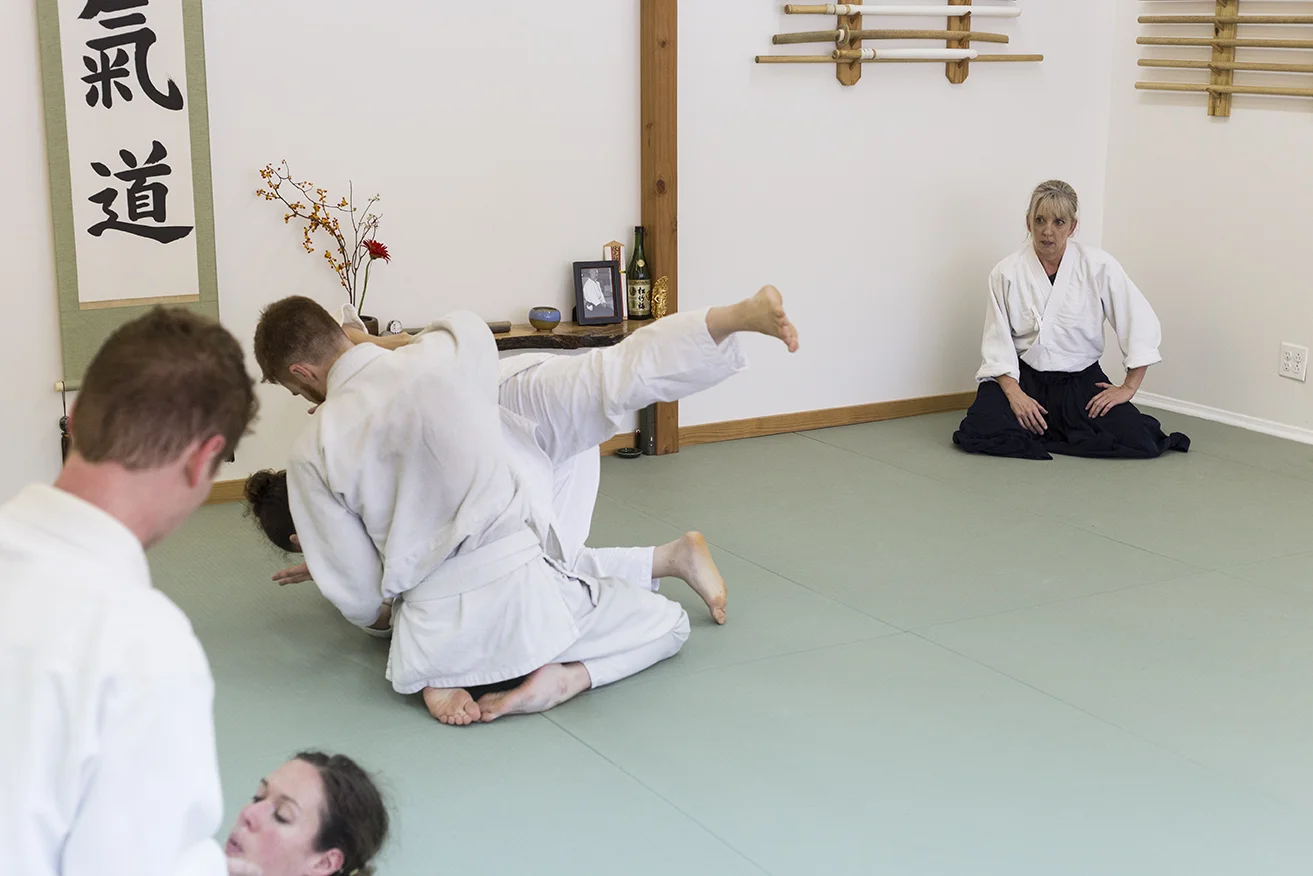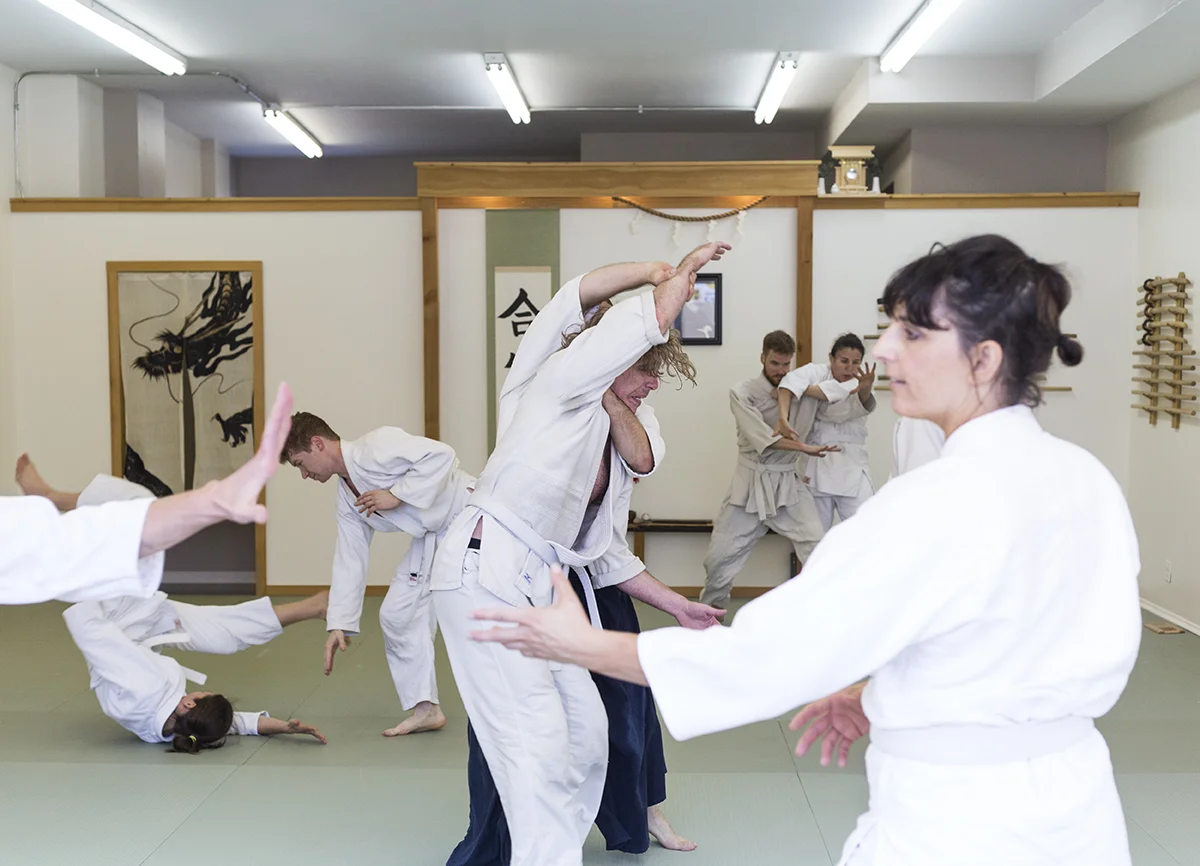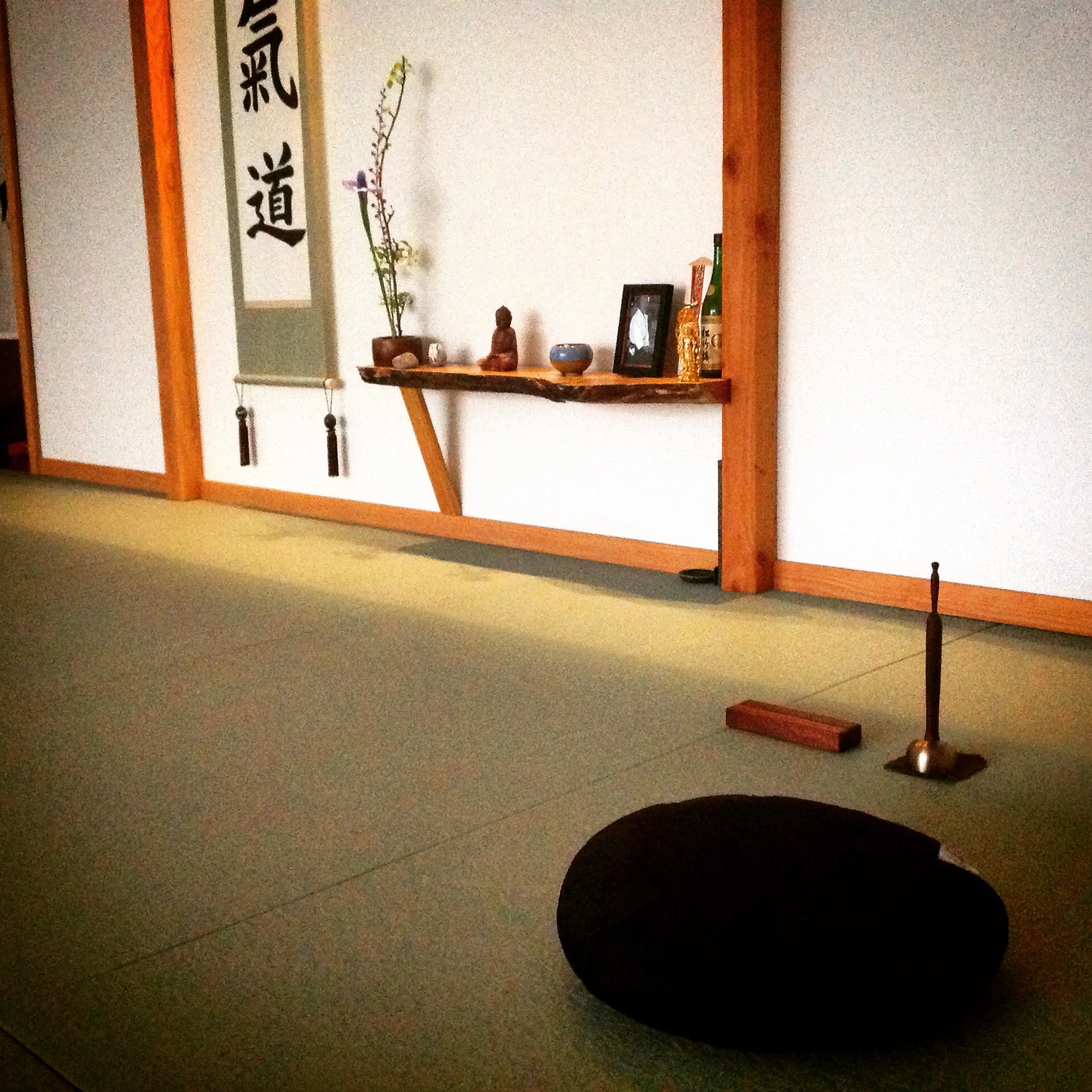Practice Overview
Below is a general outline of the components of practice in our dojo. While there are distinct areas of focus, it is best to think of these as different aspects of a single whole; they all work in the service of developing you as a practitioner of the art. Even though there is generally a progression from beginning to advanced concepts, ultimately they work in unison and the distinctions become less relevant the more time you put into practice. With a fresh and lively approach to your practice, both basic and advanced concepts can be studied for a lifetime.
kihon waza
basic techniques
The basic techniques are what constitute the underlying technical structure of the art, and should be approached as “foundational” rather than “simple.” In short, this is the daily work of training in the dojo. Basic theories and techniques are never discarded and are continually refined for the duration of your practice.
extensions
Henka Waza: Adaptive/contingency techniques; chaining basic techniques
Kaeshi Waza: Reversals
Newaza: techniques when lying on the ground
Randori: dynamic spatial maneuvering with multiple uke
jiyu waza
free-form techniques
The realization and application of basic techniques in a more dynamic training context. Jiyu waza helps to enliven the basic curriculum and trains adaptation, problem solving, and composure under pressure.
types of jiyu waza
Basic: Expression of a limited number of predetermined techniques; helps to train the actualization of basic techniques without the benefit of visual cues
Progressive: Completion of techniques dependent on responses from uke; trains adaptation to failure and resistance
weapons
Training with the wooden staff, sword, and knife are essential in gaining a complete understanding of the art. This is especially true for sword work, as many of the basic techniques have their origins in movements of the sword. Rather than being a combative weapons system, this type of training seeks to develop greater senses of movement, spacing, and intensity.
Weapons practice is mainly comprised of suburi (strikes) and their application in partnered kata (forms.)
zazen
meditation
Seated meditation is practiced to teach us to be present in the moment, here and now. This has a very clear application to what is required in Aikido practice and also our daily lives. Because of this, there is a long history of meditation and martial arts being practiced together.
While the seated meditation practiced at the dojo forms the entry to the path of Zen Buddhism, we do not offer it in this context and interest in a deeper Buddhist practice is not necessary or required.
conditioning
Rigorous training requires a healthy and responsive body. Portions of every day are dedicated to conditioning the body specifically for practice, and these times should not be avoided. And while the practice itself will indeed help in overall wellness, a long-term commitment to conditioning/strengthening the body will open up whole new dimensions of your practice.
areas of focus
Strength/mobility/agility exercises: Increases strength, flexibility, and cardio capacity and helps reduce risk of injury
Striking: Repeated self-study & practice will help your strikes have power and precision; improves cardiovascular health
Weapons suburi: Repeated self-study improves your ability with the weapon and conditions the body for many techniques with or without a weapon





